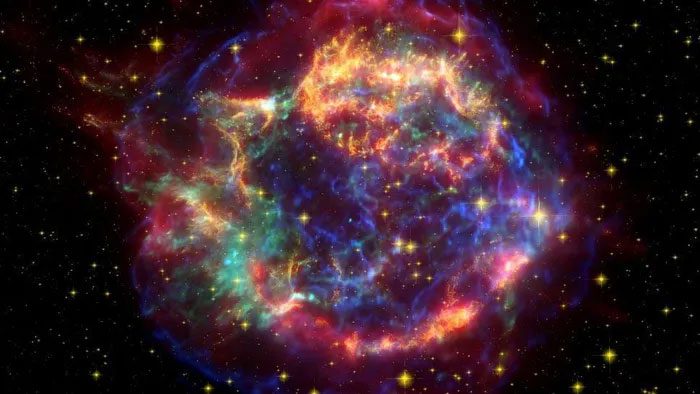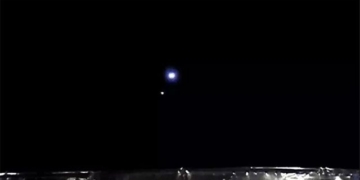A new study reveals that a powerful shock wave traveling through a gas cloud left behind after the explosion of a star has a peculiar feature: part of it is moving in the wrong direction.
Researchers found that the shock wave is accelerating at different speeds, with a portion collapsing back towards the origin of the supernova explosion, which the authors of the study refer to as “reverse shock.”
Cassiopeia A is a nebula, or gas cloud, left by a supernova in the Cassiopeia constellation, located about 11,000 light-years from Earth, making it one of the closest supernova remnants.

Supernova observed by NASA’s Hubble Space Telescope.
This nebula, approximately 16 light-years wide, is composed of gas (mainly hydrogen) that was expelled both before and during the explosion that tore apart the original star. A shock wave from that explosion is still traveling through the gas, and theoretical models suggest that this shock wave should expand uniformly, like a continuously inflated spherical balloon.
Lead author Jacco Vink, an astronomer at the University of Amsterdam in the Netherlands, stated: “For a long time, we suspected that something strange was happening inside Cassiopeia A. Previous studies indicated that the internal motions of the nebula are ‘quite chaotic’ and emphasized that the western region of the shock wave moving through the gas cloud might even be going in the wrong direction.”
In the new study, researchers analyzed the motion of the shock wave using X-ray images collected by NASA’s Chandra X-ray Observatory, a space telescope orbiting Earth. Data collected over more than 19 years confirmed that part of the western region of the shock wave is indeed collapsing in the opposite direction.
However, they found something even more surprising: parts of the same region are still accelerating away from the epicenter of the supernova, just like the rest of the shock wave.
Vink noted that the current average speed of the expanding gas in Cassiopeia A is about 21.6 million km/h, making it one of the fastest shock waves ever observed in supernova remnants. This is primarily because the remnant is still quite young; light from Cassiopeia A reached Earth in 1970. However, over time, shock waves lose momentum to the surrounding environment and slow down.
Cassiopeia A consists of two main expanding gas shells: the inner shell and the outer shell. These two shells are two halves of the same shock wave, and in most nebulae, the inner and outer shells are traveling at the same speed and in the same direction. But in the western region, the two shells are moving in opposite directions: the outer shell continues to expand outward, while the inner shell is moving back toward where the exploding star would have been.
However, what truly puzzles researchers is how fast the outer shell is expanding compared to the inner shell that is retreating in this area. Researchers predicted that the outer shell would expand at a slower rate than the rest of the shock wave, but they found that it is actually accelerating faster than some other regions of the shock wave. “That was completely unexpected,” Vink said.
The unusual expansion in the western region of Cassiopeia A does not align with theoretical supernova models and suggests that something has occurred with the shock wave after the star’s explosion.
Researchers also suggest that the unique way in which the original star died could explain the uneven shock wave. Cassiopeia A is the result of a Type IIb supernova, where a massive star exploded after it had almost entirely shed its outer layers.
Vink stated: “X-ray estimates suggest that the star had a mass 4 to 6 times that of the sun at the time of the explosion, but it is likely that this star had a mass about 18 times that of the sun when it was born. This means that the star lost about two-thirds of its mass, most of which was hydrogen, before it exploded; the shock wave may have collided with this gas.”
Currently, no one knows exactly what is driving the uneven shock wave of Cassiopeia A.





















































